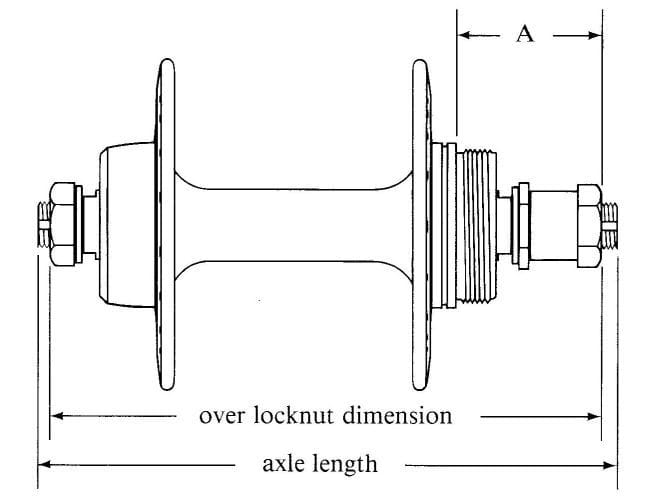In the C&V days, racers could get a neutral support wheel. (Is this still done anywhere? I'm out of touch, but I doubt it).
For someone else's wheel to shift properly, the freewheel spacing had to be standardized. For USA racers, what I'm most familiar with, but also probably elsewhere, Campy's standard was THE standard. Maybe that was different in France? In the '70s and earlier, French hubs often (usually) had more space there than Campy, just another reason not to use French stuff for racing. I bet the pro teams that used French hubs respaced them to the Campy dimension, but that's just a guess.
The spec I'm talking about is what's labeled as dimension "A" in this diagram from Sutherland's:

The Campy spec, from the shoulder at the end of the freewheel thread to the outer face of the cone locknut, was
30 mm for 5-sp, and 35 mm for 6-sp. Some brands of freewheel moved the cogs right or left a little, relative to that shoulder on the hub, compared to other brands, so complete compatibility was not assured. But it was good to stick to those numbers. The equivalent number for French hubs was 34 mm for a 5-sp, lots of extra dish for no good reason. Campy rules, Normandy drools.
Poorly designed frames (even those marketed as "professional racing bikes") often didn't have the chainstay or seatstay clearance to allow such a narrow freewheel space, leaving you no option but grinding away the offending material from the stays, or adding extra spacers (and dish) to your wheel. The better Italians had the frame clearance down pat by the '50s, maybe earlier, but some stubborn French and English brands kept doing it
wrong well into the '70s, using "domed" seatstays, centered on the dropout tab (not offset outward), no indent, no metal trimmed away. Lame! I have no qualms about grinding the metal off vintage frames that were made wrong, and I won't apologize for calling it "wrong", there's no defense for it.
Ultra-6 was marketed as fitting in the same space as a 5-sp but it was never true, they were always a bit wider than a 5-sp, so you typically had to add 1.0 or 1.5 mm of axle spacer and redish,
or grind even more metal off the stays on the inner face of the dropout. I doubt anyone ever put Ultra-6 freewheels on neutral support wheels, they were either 5- or 6-sp in my experience.
Maybe it's obvious but it's good to note that the chainstay only has to clear the freewheel teeth, not the chain, so it doesn't need to be flattened as far to the
right as the seatstay, but the flattening should allow the wheel to be removed without gouging the frame, so with horizontal dropouts, that meant the flattening had to extend much further
forward. The seatstay flattening had to go further right, like almost flush with the inner face of the dropout, but not very far upward. It has to clear the chain not just when riding steady-state in high gear, but also when shifting. Shifts can be a bit chaotic, with the chain moving around sometimes more or less, I think of it as a "probability cloud". So if you
never want to nick the paint there, the clearance has to be considerably more than you might think from just looking at it in the stand.
Here's an example of a frame with (1) the seatstay clearance taken all the way down to flush with the inner face of the dropout, and (2) the chainstay flattening is longer toward the front of the bike for fast wheel changes, but not as deep — some chainstay remains inboard of the dropout, for strength. Chainstays are loaded much more, and more likely to crack from fatigue, so a bt more metal remaining there was considered worth it.

Related question, does anyone remember what freewheel space Phil Wood used BITD? Since adding an axle spacer is nearly impossible with that design, did they wimp out like the French and just throw more dish at it to make the frame clearance problem go away? If they stuck with the Campy standard of 30 mm, then their hubs wouldn't work on a lot of frames. I've used plenty of Phil hubs over the years but I don't remember what they measured there. Same Q for similar "unspaceable" hubs like Hi-E, Bullseye and the like, that don't use 10 mm threaded axles with washers. I used a fair number of Hi-E hubs but I made my own spacers for Hi-E to dial in the spacing. That's also possible with Phil, but a lot more difficult. Most people, lacking a lathe and an arbor press, could only send their hub back to Phil for respacing, so it was rarely done.